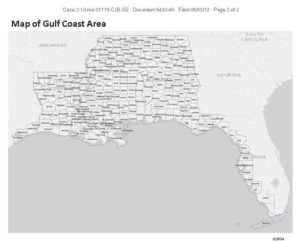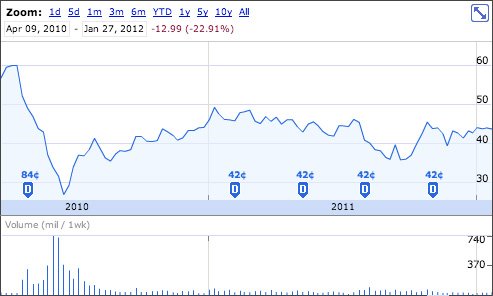Experienced New Orleans, Louisiana Litigators
When BP formally entered into the Economic & Property Damages Settlement in early 2012, the horizon was fairly bleak. Tens of thousands of private claims for economic loss had not been successfully resolved in the GCCF, which had been heavily criticized for a number of different reasons.
BP was about to face a massive trial involving not only these claims, but also the medical claims of clean-up workers and others who had been exposed to oil and/or dispersants; the claims of States and Local Governments; a few remaining wrongful death or personal injury claims regarding workers who were injured or killed on April 20, 2010; and the claims of the U.S. Government for penalties due to violation of the Clean Water Act. Additionally, although not part of the trial that was scheduled to commence in early 2012, BP was facing Criminal Charges brought by the U.S. Government, as well as a group of Securities Fraud lawsuits, along with billions of dollars in Natural Resources Damages that would be owed to U.S. and State Trustees under the Oil Pollution Act. BP had also been precluded from entering into potentially lucrative contracts with the Department of Defense, the Department of the Interior, and other U.S. Government agencies. BP was in desperate need of public, legal, regulatory and other good will. Its stock price was depressed due to all of the uncertainty.
It is against this backdrop that BP was negotiating with the Court-appointed Co-Liaison Counsel, (Steve Herman and Jim Roy), and the Plaintiffs’ Steering Committee.
It was established at the outset that any settlement would have to be objective, transparent and independent. Specifically, the decision regarding whether a person or business has suffered a loss as a result of the Spill could not be left to the subjective and varying determinations of individual adjusters or some type of ‘czar’ – an invitation to inconsistent, arbitrary and unfair results, and claims (whether valid or not) that some claimants, attorneys or claims preparers were the recipients of alleged favoritism or special deals. Rather, there must be objective standards and criteria that could be applied, without discrimination or variation, to each and every claim. Secondly, those objective standards and criteria would have to be publicized to everyone at the outset of the Settlement Program, and people could not be left in the dark about how their claims had been evaluated. Rather, people would be provided with a ‘spreadsheet’ along with their determination, and the specific grounds for any denial if their claims were denied. Finally, the Claims Administrator could not be a lawyer hired unilaterally by British Petroleum, but had to be an independently appointed official, who was answerable to neither BP nor to the Plaintiff Steering Committee, but to the Court. To all of this, BP agreed.
The Settlement Program and its Claims procedures shall be subject to the ongoing supervision of the Court. The criteria, documentation, proof, and Compensation Amount provisions of each of the Claims categories shall apply equally to all Claimants regardless whether they are proceeding individually, represented by others, or proceeding as an assignee of an individual Claim.
– Settlement Agreement, Section 4.4.7
Significantly, it was agreed that the settlement would be uncapped. While BP disclosed to its shareholders that it expected the payouts to total approximately $7.8 Billion, all Business Economic Loss Claims – and all claims outside of the guaranteed $2.3 Billion Seafood Compensation Fund – meeting the objective standards and criteria set forth in the Settlement Agreement would be paid.
Wanting to tell the public, the Government, and its shareholders that it the company was getting a wide release from civil liability under the Settlement Agreement, BP chose to include a broad array of businesses, and the entire States of Louisiana, Mississippi, and Alabama – all the way to the Arkansas / Tennessee lines – in addition to the entire Florida Panhandle and Gulf Coast, and the Southwest part of Texas.
 BP could have, but did not, ask to limit the class to those persons and businesses South of I-10.
BP could have, but did not, ask to limit the class to those persons and businesses South of I-10.
BP could have, but did not, seek to exclude the claims of agricultural businesses, or educational institutions, or other non-profits, or doctors, or lawyers, or other professionals.
BP could have, but did not, attempt to place a cap or limitation on the total dollars that could be paid out or claimed.
Like any settlement, the settlement that has been reached to resolve this litigation is a compromise, a yielding of the highest hopes in exchange for certainty and resolution.
The Settlement stands alone, however, in its substantive generosity to the Class Members and in its procedural fairness.
The formulas were negotiated at length by the Parties’ counsel, assisted and informed by experts and colleagues with specialized knowledge of various aspects of the litigation and the array of claims categories. These experts, who included economists, accountants, and real estate experts, among others analyzed and responded to questions posed by both BP and the PSC throughout the negotiation process.
– Rick Godfrey, Lead Counsel for BP.
For more information on the BP Spill and other types of environmental lawsuits, contact Herman, Katz, Gisleson & Cain, LLC.
Other BP Oil Spill News
New Orleans, LA Oil Spill Settlement Lawyers The Economic & Property Damages Class Settlement was approved by the District Court on December 21, 2012 and affirmed by the U.S. Fifth Circuit Court of Appeals on [...]
Experienced New Orleans, Louisiana Litigators When BP formally entered into the Economic & Property Damages Settlement in early 2012, the horizon was fairly bleak. Tens of thousands of private claims for economic loss had not [...]
New Orleans, LA Lawyers Fighting for the Local Business One weekend, Co-Lead Counsel, Steve Herman and Jim Roy, got an e-mail from a lawyer in Washington asking for the Class’ consent to an “amicus” (or [...]
This article attempts to shed light on some of the questions regarding the original 2010 BP tragedy, the 2012 settlement agreement, and why BP changed its mind.
New Orleans, LA BP Settlement Program Policy In interpreting and applying the BP Economic & Property Damages Class Settlement, the Claims Administrator has issued a number of Policies to guide the Program Vendors, and Claimants, [...]
New Orleans Oil Spill Lawyer On April 20, 2010, BP was in the process of temporarily plugging a deepwater well on the outer-continental shelf approximately 50 miles from the mouth of the Mississippi. Using Transocean’s [...]


